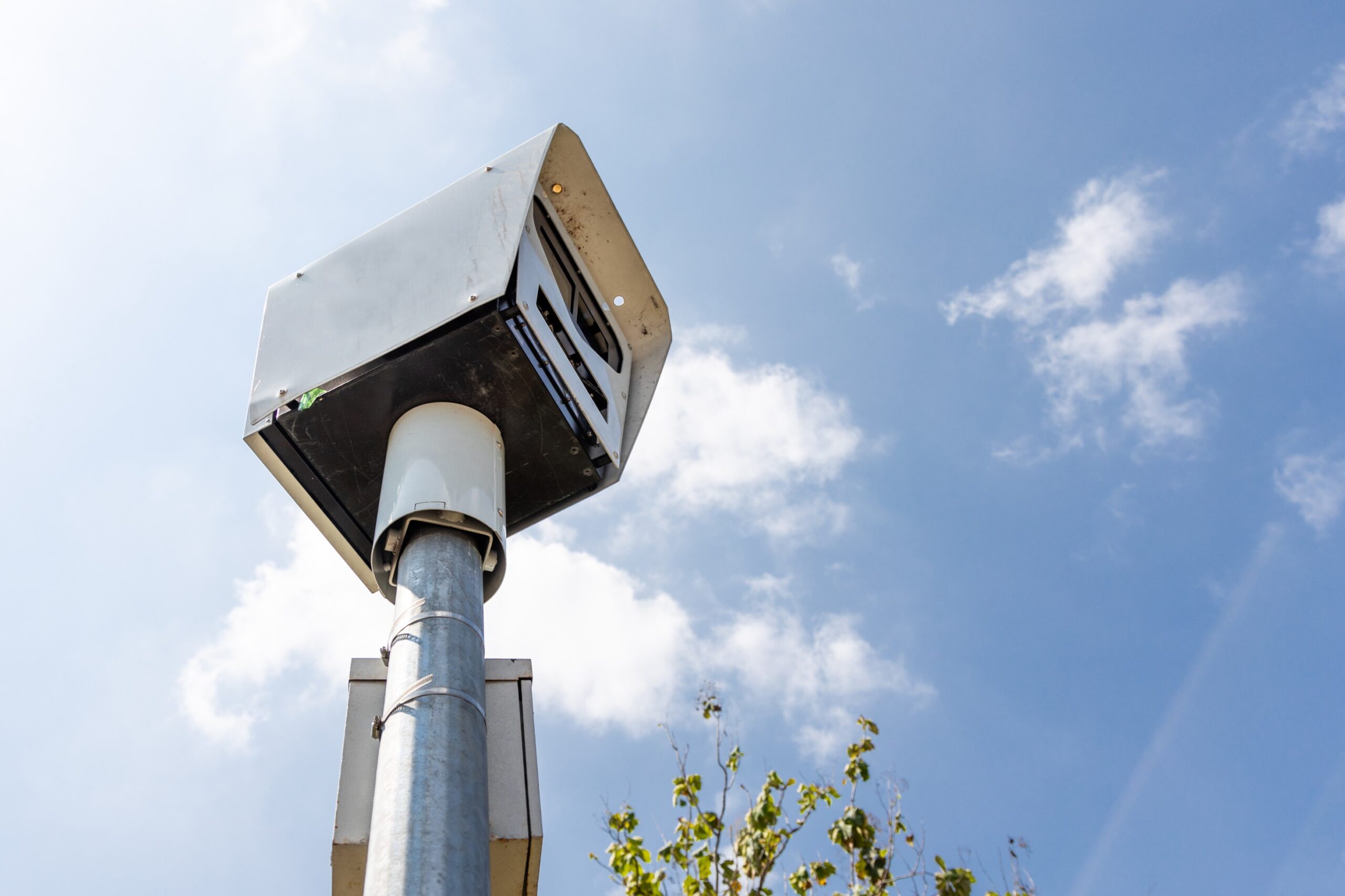Non-Radar Proof of Speeding in Kansas City: How Police Prove Speed Without Radar

When Kansas City drivers think of speeding tickets, they immediately consider radar guns. However, radar is not the only way of establishing that a car is speeding. Kansas City police officers employ several non-radar methods of establishing that a driver was speeding. These methods are just as effective in court as radar.
Knowing how police calculate speed without radar educates drivers on their rights and allows them to build a stronger defense when ticketed.
This piece explains how non-radar speed measurement is performed, the police equipment used, and how drivers can challenge such evidence in Kansas City traffic court.
What Is Non-Radar Speed Measurement?
Non-radar speed measurement involves the measurement of the speed of a driver without the use of radar or laser. These methods are founded on physics, time, or observation rather than radio waves.
Police officers who have received instruction in non-radar techniques are able to estimate the speed of a vehicle with accuracy by distance, time, or visual pattern. Kansas City courts will find these acceptable methods as long as the officer is right in procedure and properly records the data.
Some of the most commonly used non-radar methods are:
- Pacing method
- VASCAR (Visual Average Speed Computer and Recorder)
- Aerial timing (aircraft measurement)
- Time-distance calculation
- Visual speed estimation
Very precise criteria exist for all of these procedures to ensure accuracy and fairness.
The Pacing Method
Perhaps the most pervasive and oldest means of non-radar speed enforcement is the pacing method. With this method, a Kansas City police officer follows a target vehicle and travels side by side with it at the same speed for a measured distance.
The officer then takes a look at their patrol car’s speedometer to find out how fast the driver is. For instance, if the officer’s speedometer indicates 60 mph while maintaining the same distance pursuing the target vehicle in a 45 mph speed limit area, then the driver is speeding.
For the pace method to be proper as evidence, the officer’s speedometer must be proper and recently calibrated. Officers must pace behind at a uniform distance for an extended period of time for the reading to tell the driver’s true speed.
VASCAR: A Time-Distance Device
VASCAR stands for Visual Average Speed Computer and Recorder. It’s an electronic portable device used to measure the average speed of a vehicle by recording the time taken to cover two fixed distances.
For example, a police officer can place two points on a road — a pair of roadside signs, for instance. The officer presses one button as the car passes the first and another as it passes the second. The VASCAR calculator calculates the average speed from the distance and the time.
Kansas City police use VASCAR in fixed and patrol cars. The method does not use radar signals and is thus radar detector immune. Properly used, it yields precise and reliable measurements that can hold in traffic court.
Aerial and Time-Distance Measurement
The Kansas City police sometimes also work with state patrol units on airplane speed enforcement. Police officers in planes watch fixed points along the road, which are typically white-painted or marked with paint pens.
They time by stopwatch or electronic timer how long a car takes to travel from one point to another, or from an airplane. The distance they measure and the time elapsed inform them of the car’s average speed.
This method is practical for long, straight segments of highways. It’s especially useful in heavy traffic or mass safety operations.
Although it sounds strange, aerial speed enforcement persists all over Missouri as part of focused safety initiatives.
Visual Estimation by Trained Officers
Visual estimation of velocity is also an accepted non-radar method in Kansas City. Trained officers can visually estimate the speed of a car based on how it appears to be moving compared to other vehicles, road markings, or environmental characteristics.
Police officers are officially trained to estimate visually with a small margin of error. Their opinion is conclusively accepted by the courts as long as it is substantiated by other evidence, such as a dashcam or pacing.
For example, an officer may opine that a car was “substantially faster” than other cars and be substantiated by video records of sudden acceleration.
Legal Standards for Non-Radar Speed Evidence in Kansas City
Kansas City traffic statute allows non-radar means as admissible evidence if they are legal and procedurally valid. Officers must:
- Utilize approved means of measurement.
- Measure using properly calibrated or certified meters (where available).
- Record the speed of reading legibly and in good time.
- Have adequate training in the employed technique.
Admissibility of non-radar evidence is based on the officer’s training, device accuracy, and based on the records maintained and introduced into court.
Drivers may rebut such evidence if calibration is in question, measurement timing, or observation by the officer is in doubt.
Common Defenses to Non-Radar Speeding Tickets
While non-radar evidence is permissible, it can be challenged. Common defenses are:
- Faulty calibration: The Patrol car speedometer was not calibrated or checked properly.
- Pacing distance too brief: Officer paced too briefly to determine accuracy.
- Timing errors: Incorrect start or stop times in VASCAR or aerial observation.
- Indistinct observation: Visual estimate unsupported by other witness testimony.
- Environmental interference: Hills, curves, or other traffic blocking the line of sight.
Traffic defense services like Speeding Ticket KC review each case to uncover faults within the officer’s report or equipment records.
How Non-Radar Methods Affect Drivers
To Kansas City drivers, knowledge of non-radar tactics is no surprise. Most believe radar detectors will give them a warning of police monitoring, yet non-radar techniques cannot be detected in that way.
Police officers can measure speed without sending out a signal. That means even cautious drivers can get a ticket if they’re not following signs.
Recognizing these devices is a reminder to motorists that radar is not the sole method of enforcement. It is, however, the most effective way of beating a ticket and keeping your license.
Police Training and Certification
Kansas City police officers undergo special training before issuing citations based on non-radar techniques. The training involves:
- Time-distance measurement concepts
- Speed estimation methods
- Calibration and record-keeping
- Observation of traffic from stationary and mobile points
The certified officers also need to attend refresher courses in order to stay updated. The programs ensure that all the measurements are Missouri and Kansas City compliant for speed enforcement.
The Use of Dashcams and Body Cameras
Non-radar enforcement aided by high technology is on hand. Dashcams and body cameras, recording traffic stops as well as the flow of traffic, are now a standard feature in most Kansas City police uniforms and patrol vehicles.
These videos are usually secondary evidence for non-radar cases. For example, pacing evidence may be supported by the dashcam video capturing the distance and tail pattern.
This openness serves to safeguard the drivers as well as the officers and renders the process accountable and just.
What to Do If You Get a Non-Radar Speeding Ticket
If you’re cited for speeding based on non-radar evidence, don’t panic. Start by checking the details of your ticket — including where and how your speed was measured.
You can request the officer’s training records, calibration certificates, or VASCAR logs through legal channels. Any missing or unclear data may support your defense.
A consultation with a local Kansas City traffic attorney or agency like Speeding Ticket KC can uncover weaknesses in the case and reduce penalties.
FAQs
1. Can officers issue a speeding ticket without radar in Kansas City?
Yes. Officers can use pacing, VASCAR, visual estimate, or aerial timing to determine speeding.
2. How accurate are non-radar techniques?
They can be very accurate if performed with precision. Accuracy is based on proper training, timing, and calibration.
3. Can you successfully defend a non-radar speeding ticket in court?
Yes. You can challenge the training of the officer, the method used, or the reliability of the evidence.
4. Do radar detectors protect against non-radar speed traps?
No. Radar detectors will not detect non-radar methods because they don’t emit signals.
5. Who may help with non-radar speeding tickets in Kansas City?
Speeding Ticket KC will review your case and help you with the preparation of a defense against unfair citations.
Last Words
Non-radar speed enforcement is an important tool for Kansas City traffic safety. From pacing to timing to observation, these methods allow officers to make roads safer.
For drivers, awareness is the best defense. Understand how police measure speed, respect posted limits, and drive responsibly. If you’re ever ticketed through a non-radar method, knowing your rights and seeking help from Speeding Ticket KC can make a big difference.

